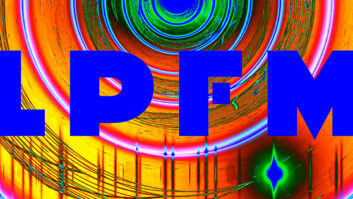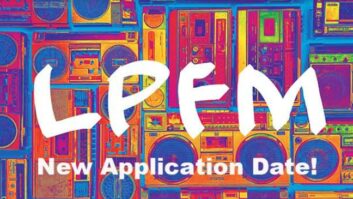It’s Time to Call a Halt to the AM IBOC ‘Experiment’ and Start Talking Alternatives
(click thumbnail)
In his article in the June 7 issue of Radio World (page 22), Steve Davis, senior vice president of engineering for Clear Channel Radio, provides some information about the power levels in the AM IBOC primary sidebands. This is a useful contribution to the IBOC lexicon, but I have to ask the question: Why aren’t these details common knowledge, especially amongst those who are actively implementing the technology?
While it is common knowledge that the digital power level in FM IBOC is -20 dBc, most folks in the industry have simply assumed that the same number applies to the AM system, and IBOC promoters have certainly not gone out of their way to disabuse them of that notion. Davis focuses only on the primary sidebands, and doesn’t give the overall power level either, so let it stated be here: The digital power level in the AM IBOC system is approximately -12 dBc (more precisely, it is -11.7 or -12.3 dBc, depending on the setting of a power control that is specified in the NRSC-5 standard).
Yes, that’s right – the digital power level, relative to the analog carrier power, is fully 8 dB higher in the AM system than in the FM system.
Davis goes on to mention that the digital carriers are modulated as complex conjugate pairs, orthogonal to the AM carrier. This is done for the purpose of “minimizing interference to existing analog operations.” This is true as far as it goes, but it omits some important details.
The complex conjugate modulation actually does not apply to the primary digital sidebands, the ones upon which his attention is focused. More important, he does not mention that the sole purpose of this modulation technique is to keep digital noise out of analog receivers tuned to the host IBOC station.
Two audio streams
This technique is not always successful, as both lab tests and practical experience in the field have shown. But the real point is that it does absolutely nothing to reduce interference to stations on adjacent channels. So the “existing analog operations” of which he speaks consist of the IBOC station itself, period, full stop.
Another fact about AM IBOC that seems to be uncommon knowledge is that the hybrid system has two audio streams, a 20 kilobits-per-second “core” stream and a 16 kbps “enhanced” stream. Stereo audio is only available when the less-robust enhanced stream kicks in. When talking about the digital coverage they’re obtaining, AM IBOC enthusiasts invariably neglect to mention whether they’re achieving stereo audio.
Davis also stated, “None of this guarantees that AM IBOC signals won’t create interference to other AM analog stations in the field, nor does it guarantee that they will.” I beg to differ. The nature of the AM IBOC modulation does virtually guarantee that it will create interference to other stations. If you don’t accept that, well, you’re simply in denial.
Let’s take a step back and see how we got here. When IBOC was first conceived back around 1990, it was envisioned as a system initially for the FM band.
[Editor’s note: In 1990, the concept of digital radio using COFDM was unveiled at the NAB convention in Atlanta. Project Acorn was born in 1991 to find an in-band on-channel solution for the U.S., the same year CBS and Gannett established USA Digital Radio, joined later that year by Westinghouse.]
Given the nature of the modulation (i.e., a wideband system with noise reduction properties and “capture” effect), plus its use in a VHF band where propagation is nominally line-of-sight and time-invariant (in fixed reception), it seemed plausible that stations could add digital “saddlebags” and create a hybrid analog/digital service, en route to a full digital transition at some future date. To be sure, there would be interference problems, and there would be casualties along the way; the tradeoffs involved are just beginning to come to light, and the jury is still out on whether the sacrifices will have been worthwhile.
Applying the hybrid IBOC concept to the AM band, on the other hand, is simply foolhardy. Amplitude modulation has no inherent protection against interference, and the band is already overcrowded, with about 5,000 stations in the United States and Canada shoehorned into little more than 1 MHz of spectrum.
The channel spacing is a mere 10 kHz, even though stations may occupy a nominal 20 kHz bandwidth, and nighttime skywave propagation complicates the interference environment immensely. If anything, the band needs to be thinned out, not overlaid with digital noise generators that lay waste to defenseless analog receivers tuned to the channels adjacent to IBOC stations.
NAB insistent about AM
Most of the early IBOC developers did not bother with an AM system, probably realizing that it was an untenable engineering problem. However, when the NAB ended its brief fling with the Eureka-147 DAB system and hopped aboard the IBOC bandwagon, it decreed that there had to be an AM IBOC system, or the whole concept of digital radio wouldn’t fly.
USA Digital Radio dutifully developed an AM system, though, one suspects, without a great deal of enthusiasm. The company actually subcontracted most of the development to an aerospace firm.
This was the progenitor of the Ibiquity system that we have today. It seems very unlikely that, on its own, this system would ever have seen the light of day; it got here by riding the coattails of the FM IBOC system.
Some of its problems were already quite evident in the Ibiquity lab test results, but they were downplayed in the National Radio Systems Committee evaluation of the results. Again, the heavy hand of the NAB was evident here: IBOC was the only acceptable approach for digital radio, and it would not be acceptable unless there was a system for AM as well as FM.
The number of AM IBOC stations on the air is still very small (about 2.7 percent of the AM stations in the country, by my reckoning), and there is still no FCC-authorized nighttime operation, there is still no FCC-authorized nighttime operation, yet a number of instances of serious interference have already surfaced. The reports have been largely anecdotal (comments on mailing lists, private communications, etc.) up to this point, but they represent the tip of a very large iceberg.
Though most of the daytime problems result from groundwave signals on second adjacents, dramatic levels of interference from first-adjacent skywave signals during critical hours have also given many of us a taste of what nighttime hybrid AM IBOC would bring: a quagmire of digital noise.
Despite a certainty of across-the-board degradation of analog AM service, the backers of IBOC still see a silver lining in this cloud. What they gain is a digital service providing a single audio stream with very modest coverage and “FM-like” quality.
In other words, the AM band in effect becomes an adjunct to the FM band, with each AM IBOC station adding one more channel to the lineup in a digital receiver. It no longer needs to be identified with the AM band at all – no more AM stigma!
Go all-digital now
This strategy may make sense to the bean counters in the large markets, but the price paid in lost or degraded analog service in outlying and rural areas is far too great. Why should these players be allowed to hijack the band and turn it to their purposes, at the expense of other legitimate users of the band?
It’s time to stop the madness. There is certainly merit in bringing digital transmission technology to the AM band, but the hybrid approach embodied in the Ibiquity system is a non-starter. The only reasonable approach is to convert analog stations – or unused allocations for same, perhaps in the expanded band – to an all-digital system, and to establish the protection rules needed to coordinate their introduction into the band.
The Digital Radio Mondiale system has already shown the way to do this right. In order to provide the same degree of protection to co-channel analog stations as an analog AM station would, the digital station must run 6-7 dB less power, so a 1,000-watt AM would become a digital station running 250 watts or thereabouts.
Unlike the Ibiquity all-digital system, which occupies a bandwidth of 20 kHz, this new system should have a bandwidth of only 10 kHz, and thus finally put to rest the nighttime first-adjacent interference problems that plague the band. Even with this narrow bandwidth, the DRM system can provide a bit rate in the neighborhood of 25 kbps, and offer very reasonable audio quality. Check out some of the audio samples on the DRM Web site ( www.drm.org ).
For those Class A stations that still want to offer secondary service via skywave at night, the DRM parameters can be altered to support it. The Ibiquity system, whether hybrid or all-digital, does not support skywave reception at all.
Are we really ready to write off this unique asset of the AM band? Multi-protocol receivers (e.g., AM/FM/HD-R/DRM) are very feasible. It’s time to call a halt to the AM IBOC “experiment,” and start talking about alternatives.
Barry McLarnon of BDMComm is a Professional Engineer and independent consultant based in Ottawa, Ontario. He has worked in communication systems design, including digital broadcasting, for more than 30 years.
RW welcomes other points of view to [email protected].













